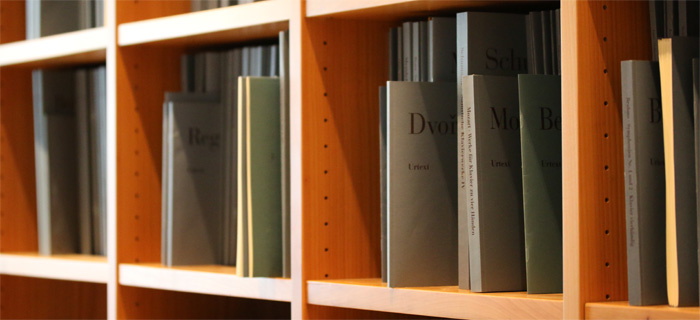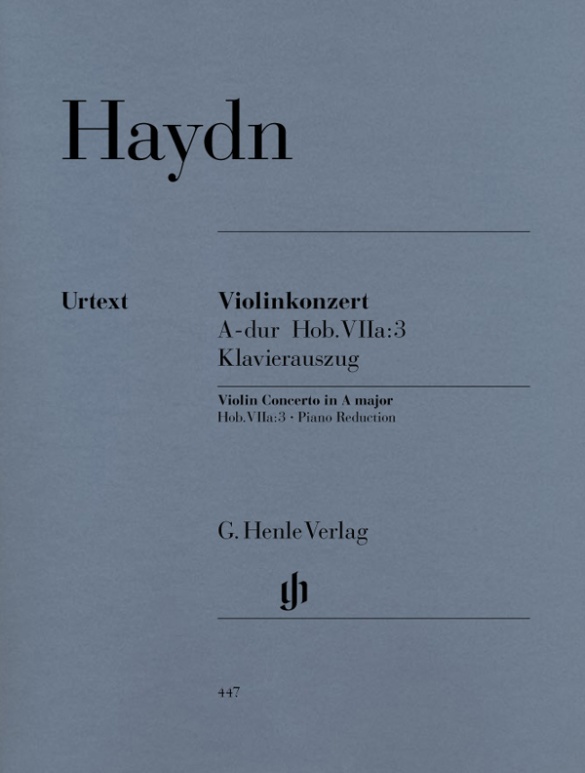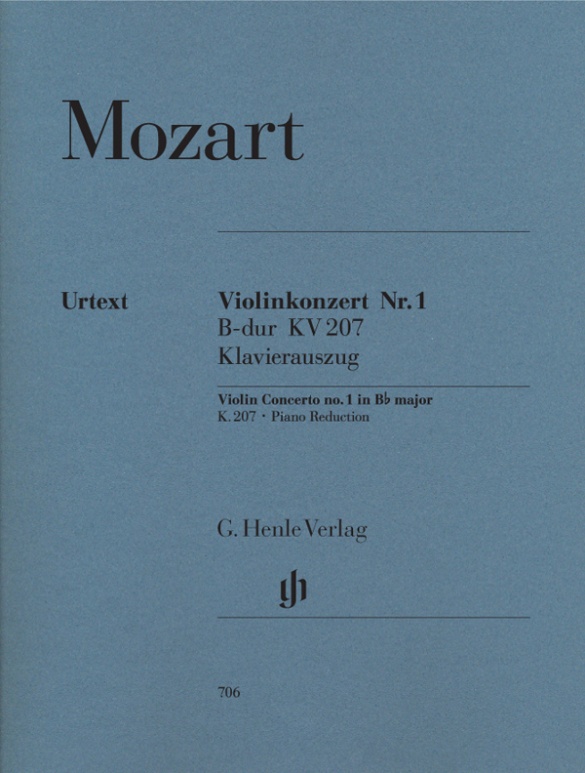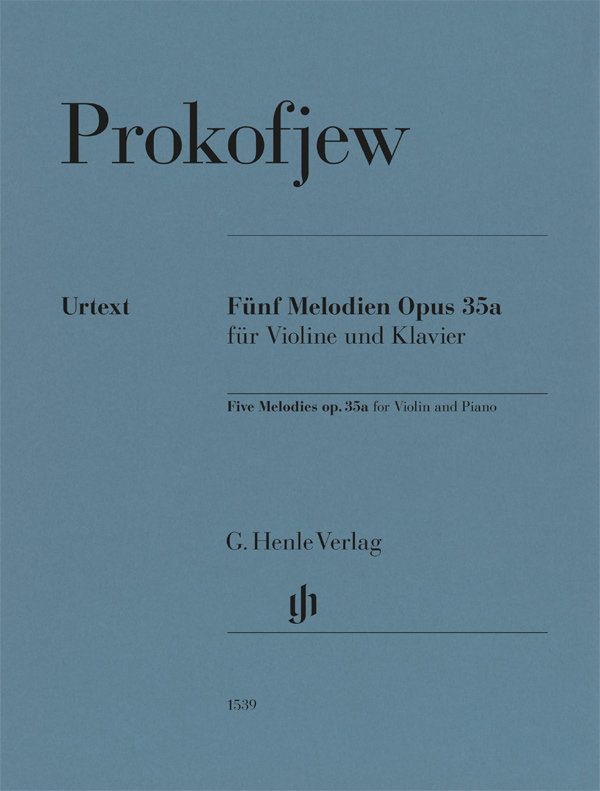

Sergei Prokofiev
Five Melodies op. 35a
During a concert tour through California in early 1920, Prokofiev composed five songs with piano accompaniment and textless voice parts, which appeared in print as Five Songs without Words op. 35 and with a dedication to the soprano Nina Koshetz. The quasi-instrumental conception of the work as vocalises accompanied by piano suggested an arrangement for violin and piano, which the composer then indeed undertook in 1925. Enriched with octave transpositions, double stops, harmonics and pizzicati, the violin part of the five pieces gained an enormous variety of additional expressive possibilities. No wonder the Five Melodies op. 35a today number among the Russian master’s most popular chamber music works! Henle is publishing them for the first time as an Urtext edition based on all available sources. Simon Morrison, a true Prokofiev specialist, contributed the preface.
Content/Details
(Explanation)
About the Composer
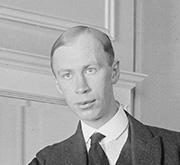
Sergej Prokofjew
Together with Shostakovich, Prokofiev is the Soviet Union’s most important composer. He left behind a
wide-ranging oeuvre from the most modern to neo-classically simple works, from
propagandistic commissions to compositions that the CPSU rejected as being formalistic.
| 1891 | Prokofiev is born on 23 April in Sontsovka (Ukraine), the son of a farmer. |
| 1904–14 | He studies at the St. Petersburg Conservatory. |
| from 1908 | He is a member of the circle around Serge Diaghilev, who occupies himself intensively with contemporary music. |
| 1911–18 | Avantgarde compositions such as Sarcasms, the Piano Concertos nos. 1 and 2, “Visions fugitives”, “Scythian Suite” are dismissed as being futuristic. |
| 1916–17 | The “Symphonie Classique”, drawing on classical models, brings him international renown. |
| 1918 | Prokofiev leaves the Soviet Union and travels to the USA, where his opera “The Love for Three Oranges” is performed in Chicago, and then travels to Paris in 1922. He enjoys a close cooperation with Diaghilev and writes ballet compositions. |
| 1919–23 | He composes the opera “The Fiery Angel”, which receives its first performance posthumously in Venice in 1954. |
| 1923–25 | The composer continues to develop his avantgarde musical language, for instance in the 2nd Symphony. |
| 1927 | He enjoys a successful concert tour around the Soviet Union. |
| 1929 | “The Gambler” is premiered in Brussels. |
| 1936 | Prokofiev returns to his home country. He writes compositions in line with the cultural ideology of the Soviet Union. He turns towards a simpler music as early as the beginning of the 1930s. “Peter and the Wolf” is composed. |
| 1946 | “The Engagement in the Monastery” is performed in Prague and “War and Peace” in Leningrad. |
| 1948 | He is accused of formalism. |
| 1953 | Prokofiev
dies on 5 March in Moscow. |
Product Safety Informations (GPSR)
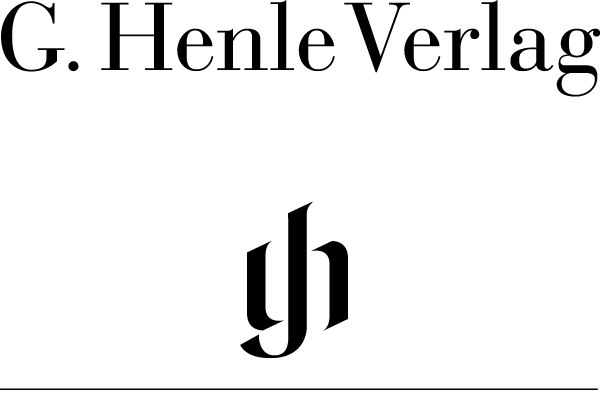
G. Henle Verlag
Here you can find the information about the manufacturer of the product.G. Henle Verlag e.K.
Forstenrieder Allee 122
81476 München
Germany
info@henle.de
www.henle.com
recommendations
autogenerated_cross_selling
Further editions of this title

